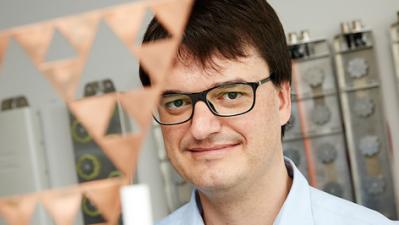Terese Alstin, Anna Haupt
Inflatable bike helmet
Finalists for the European Inventor Award 2014
Haupt and Alstin came up with the concept for their helmet while studying industrial design at Lund University in Sweden. They were inspired by survey data showing people wanted a better looking or, ideally, invisible helmet that would still keep them safe. The designer duo came out with a revolutionary solution, which they market under the name Hövding. During smooth rides, the helmet looks like a subtle scarf or collar, but it deploys into a head-hugging airbag when it detects an impending crash.
Besides looking good, cyclists who wear the Hövding helmet enjoy better protection of their head and neck because it absorbs shock three times better than standard bike helmets currently on market. The invention also holds potential to protect people practicing other sports and even those who have epilepsy.
Societal benefit
Statistics show compulsory helmet laws actually diminish the positive returns of cycling by discouraging the practice. While the number of head injuries might decrease, the number of injuries overall actually increases, even as fewer people cycle. That’s because many cyclists choose not to wear helmets specifically because they are uncomfortable or unfashionable. Thanks to its inconspicuous design, the Hövding helmet could help defy this so-called helmet law paradox.
Economic benefit
Anna Haupt and Terese Alstin co-founded Hövding Sverige AB in 2006. Today, the company employs 17 people. The helmet is currently for sale online and in nearly 100 stores throughout Europe. Hövding has plans to expand to the US market in 2016.
However, the Hövding helmet captured the world's attention in 2012 during its debut in European markets. It fills a gap in the EUR 36.4 billion global market for cycling parts and accessories, but it is especially tailored to the desires of urban cyclists who crave a higher-end product. It currently retails for EUR 400, rather than the typical EUR 30 of a standard bike helmet. As the company expands its reach, this product could easily become a global commodity in a competitive market.
How it works
When the collar is activated, its internal gyroscopes and accelerometers continuously measure the speed and position of the cyclist. Bikers move differently right before a fall or crash, so when the sensors within the helmet detect a disparity, the airbag deploys.
To achieve their goal, the inventors analysed thousands of simulated accidents involving both dummies and test drivers. They collected data on the movement, speed and acceleration of cyclists and compared them to the same variables of motion in normal cycling sequences.
The inventors
On their path from students to Chief Executive Officers, they have successfully completed seven years of product research and development, applied for a patent, and won various innovation and design awards – including the Innovationsbron Ideas Grant in 2005, which provided funds for initial research and development, and the Venture Cup, Sweden’s leading competition for entrepreneurs.
Did you know?
Media gallery
Patent numbers:
Contact
European Inventor Award and Young Inventors Prize queries:
european-inventor@epo.org Subscribe to the European Inventor Award newsletterMedia-related queries:
Contact our Press team#InventorAward #YoungInventors










